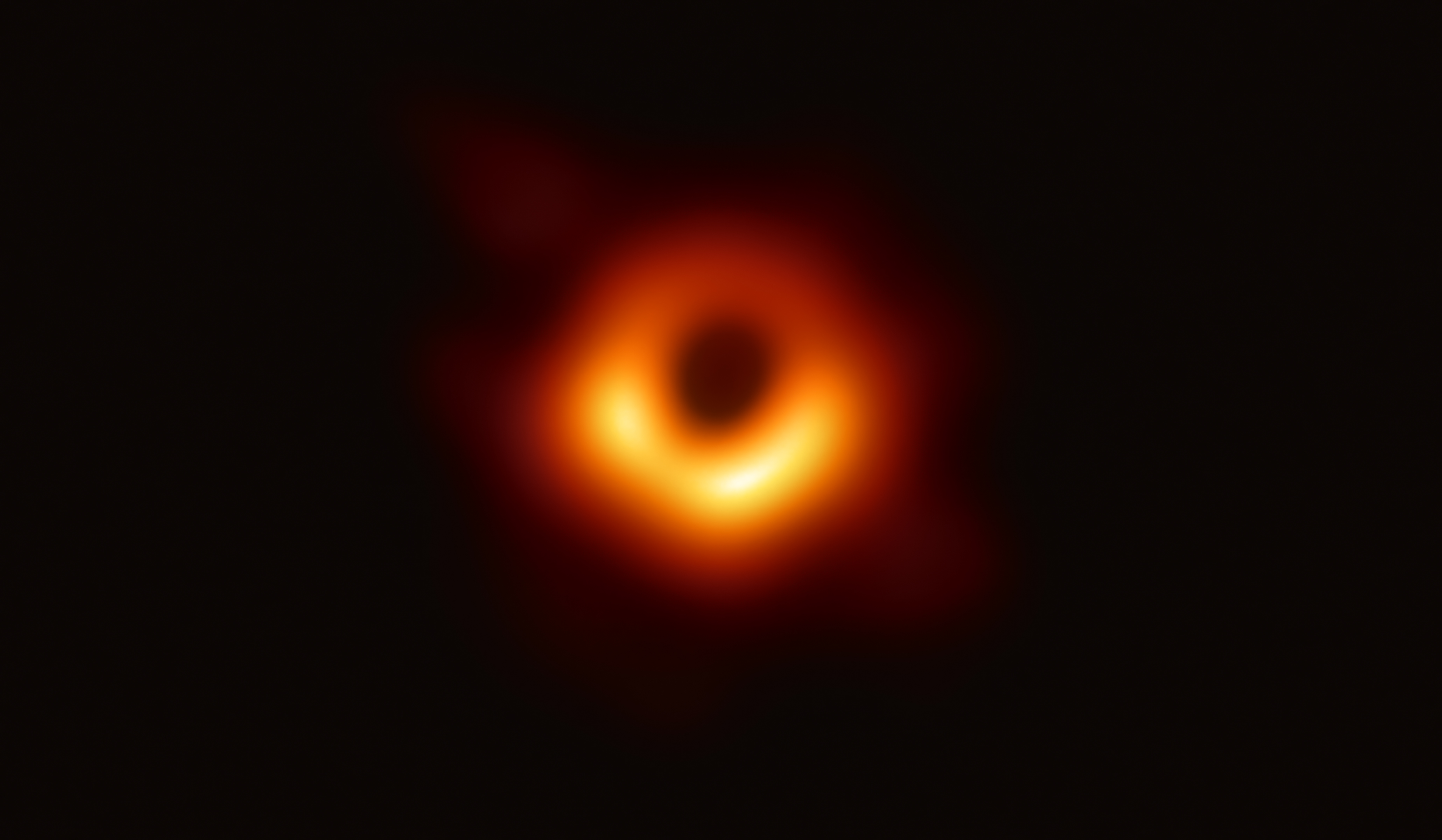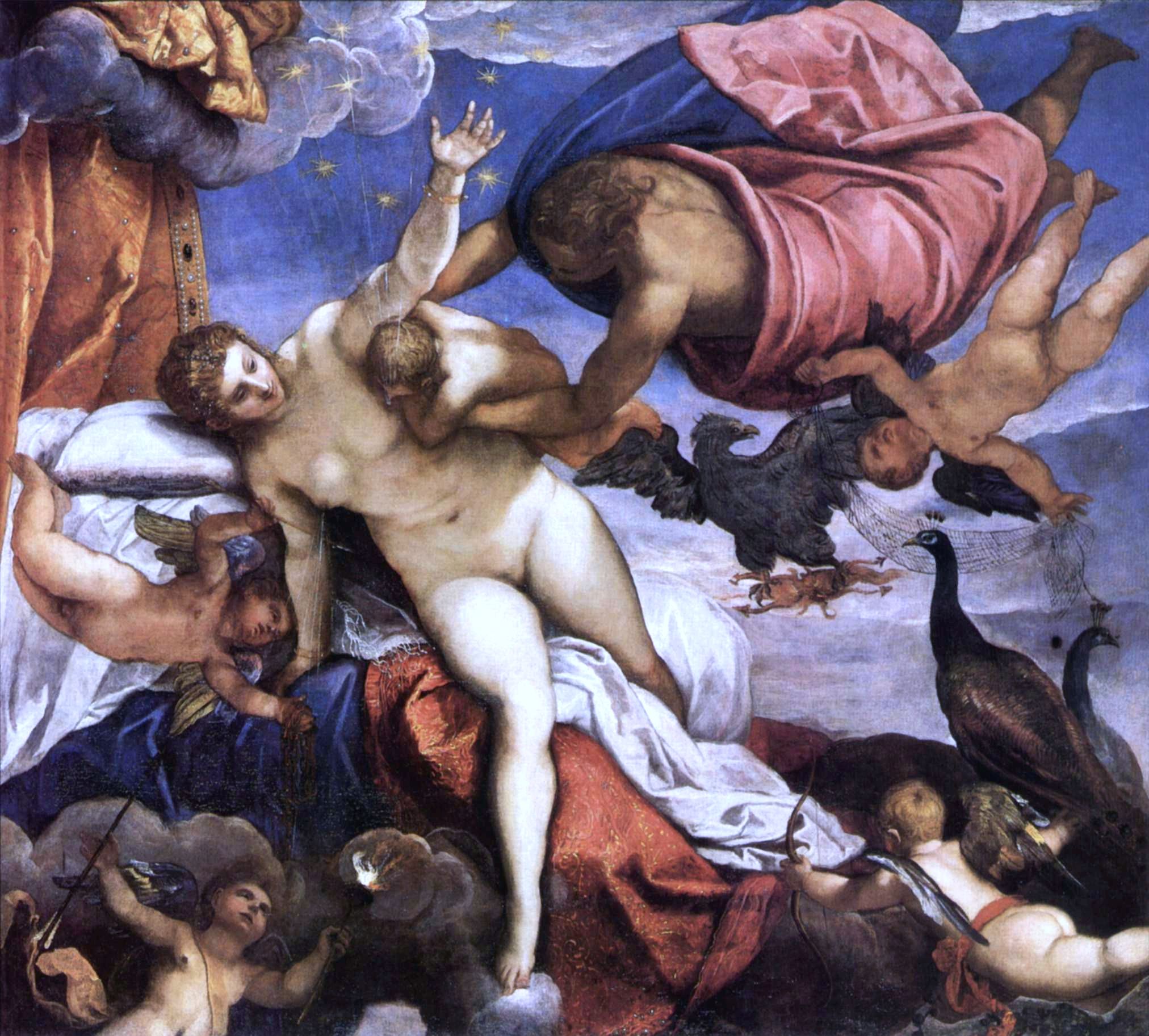|
NGC 4800
NGC 4800 is an isolated spiral galaxy in the constellation Canes Venatici, located at a distance of from the Milky Way. It was discovered by William Herschel on April 1, 1788. The morphological classification of this galaxy is SA(rs)b, indicating a spiral galaxy with no visual bar at the nucleus (SA), an incomplete ring structure (rs), and moderately-tightly wound spiral arms (b). The galactic plane is inclined to the line of sight by an angle of 43°, and the long axis is oriented along a position angle of 25°. There is a weak bar structure at the nucleus that is visible in the infrared. The galaxy has a low-luminosity active galactic nucleus with an HII region at the core. The circumnuclear zone contains a double ring structure of "ultra-compact nuclear rings"; the inner ring has a radius of 30 pc and the outer ring's radius is about 130 pc. The upper limit on the mass of the central supermassive black hole is estimated as , or 20 million times the mass of the Sun. ... [...More Info...] [...Related Items...] OR: [Wikipedia] [Google] [Baidu] |
New General Catalogue
The ''New General Catalogue of Nebulae and Clusters of Stars'' (abbreviated NGC) is an astronomical catalog, astronomical catalogue of deep-sky objects compiled by John Louis Emil Dreyer in 1888. The NGC contains 7,840 objects, including galaxy, galaxies, star clusters and emission nebulae. Dreyer published two supplements to the NGC in 1895 and 1908, known as the ''Index Catalogues'' (abbreviated IC), describing a further 5,386 astronomical objects. Thousands of these objects are best known by their NGC or IC numbers, which remain in widespread use. The NGC expanded and consolidated the cataloguing work of William Herschel, William and Caroline Herschel, and John Herschel's ''General Catalogue of Nebulae and Clusters of Stars''. Objects south of the Celestial sphere, celestial equator are catalogued somewhat less thoroughly, but many were included based on observation by John Herschel or James Dunlop. The NGC contained multiple errors, but attempts to eliminate them were made by ... [...More Info...] [...Related Items...] OR: [Wikipedia] [Google] [Baidu] |
Barred Spiral Galaxy
A barred spiral galaxy is a spiral galaxy with a central bar-shaped structure composed of stars. Bars are found in about two thirds of all spiral galaxies, and generally affect both the motions of stars and interstellar gas within spiral galaxies and can affect spiral arms as well. The Milky Way Galaxy, where the Solar System is located, is classified as a barred spiral galaxy. Edwin Hubble classified spiral galaxies of this type as "SB" (spiral, barred) in his Hubble sequence and arranged them into sub-categories based on how open the arms of the spiral are. SBa types feature tightly bound arms, while SBc types are at the other extreme and have loosely bound arms. SBb-type galaxies lie in between the two. SB0 is a barred lenticular galaxy. A new type, SBm, was subsequently created to describe somewhat irregular barred spirals, such as the Magellanic Clouds, which were once classified as irregular galaxies, but have since been found to contain barred spiral structures. Among o ... [...More Info...] [...Related Items...] OR: [Wikipedia] [Google] [Baidu] |
Supermassive Black Hole
A supermassive black hole (SMBH or sometimes SBH) is the largest type of black hole, with its mass being on the order of hundreds of thousands, or millions to billions of times the mass of the Sun (). Black holes are a class of astronomical objects that have undergone gravitational collapse, leaving behind spheroidal regions of space from which nothing can escape, not even light. Observational evidence indicates that almost every large galaxy has a supermassive black hole at its center. For example, the Milky Way has a supermassive black hole in its Galactic Center, corresponding to the radio source Sagittarius A*. Accretion of interstellar gas onto supermassive black holes is the process responsible for powering active galactic nuclei (AGNs) and quasars. Two supermassive black holes have been directly imaged by the Event Horizon Telescope: the black hole in the giant elliptical galaxy Messier 87 and the black hole at the Milky Way’s center. Description Supermassive black ... [...More Info...] [...Related Items...] OR: [Wikipedia] [Google] [Baidu] |
HII Region
An H II region or HII region is a region of interstellar atomic hydrogen that is ionized. It is typically in a molecular cloud of partially ionized gas in which star formation has recently taken place, with a size ranging from one to hundreds of light years, and density from a few to about a million particles per cubic centimetre. The Orion Nebula, now known to be an H II region, was observed in 1610 by Nicolas-Claude Fabri de Peiresc by telescope, the first such object discovered. The regions may be of any shape because the distribution of the stars and gas inside them is irregular. The short-lived blue stars created in these regions emit copious amounts of ultraviolet light that ionize the surrounding gas. H II regions—sometimes several hundred light-years across—are often associated with giant molecular clouds. They often appear clumpy and filamentary, sometimes showing intricate shapes such as the Horsehead Nebula. H II regions may give birth to thou ... [...More Info...] [...Related Items...] OR: [Wikipedia] [Google] [Baidu] |
Active Galactic Nucleus
An active galactic nucleus (AGN) is a compact region at the center of a galaxy that has a much-higher-than-normal luminosity over at least some portion of the electromagnetic spectrum with characteristics indicating that the luminosity is not produced by stars. Such excess non-stellar emission has been observed in the radio, microwave, infrared, optical, ultra-violet, X-ray and gamma ray wavebands. A galaxy hosting an AGN is called an "active galaxy". The non-stellar radiation from an AGN is theorized to result from the accretion of matter by a supermassive black hole at the center of its host galaxy. Active galactic nuclei are the most luminous persistent sources of electromagnetic radiation in the universe, and as such can be used as a means of discovering distant objects; their evolution as a function of cosmic time also puts constraints on models of the cosmos. The observed characteristics of an AGN depend on several properties such as the mass of the central black ... [...More Info...] [...Related Items...] OR: [Wikipedia] [Google] [Baidu] |
Position Angle
In astronomy, position angle (usually abbreviated PA) is the convention for measuring angles on the sky. The International Astronomical Union defines it as the angle measured relative to the north celestial pole (NCP), turning positive into the direction of the right ascension. In the standard (non-flipped) images, this is a counterclockwise measure relative to the axis into the direction of positive declination. In the case of observed visual binary stars, it is defined as the angular offset of the secondary star from the primary relative to the north celestial pole. As the example illustrates, if one were observing a hypothetical binary star with a PA of 135°, that means an imaginary line in the eyepiece drawn from the north celestial pole to the primary (P) would be offset from the secondary (S) such that the angle would be 135°. When graphing visual binaries, the NCP is, as in the illustration, normally drawn from the center point (origin) that is the Primary downward& ... [...More Info...] [...Related Items...] OR: [Wikipedia] [Google] [Baidu] |
Spiral Arm
Spiral galaxies form a class of galaxy originally described by Edwin Hubble in his 1936 work ''The Realm of the Nebulae''Alt URL pp. 124–151) and, as such, form part of the Hubble sequence. Most spiral galaxies consist of a flat, rotating disk containing s, gas and dust, and a central concentration of stars known as the bulge [...More Info...] [...Related Items...] OR: [Wikipedia] [Google] [Baidu] |
Galaxy Morphological Classification
Galaxy morphological classification is a system used by astronomers to divide galaxies into groups based on their visual appearance. There are several schemes in use by which galaxies can be classified according to their morphologies, the most famous being the Hubble sequence, devised by Edwin Hubble and later expanded by Gérard de Vaucouleurs and Allan Sandage. However, galaxy classification and morphology are now largely done using computational methods and physical morphology. Hubble sequence The Hubble sequence is a morphological classification scheme for galaxies invented by Edwin Hubble in 1926. It is often known colloquially as the “Hubble tuning-fork” because of the shape in which it is traditionally represented. Hubble's scheme divides galaxies into three broad classes based on their visual appearance (originally on photographic plates): * Elliptical galaxies have smooth, featureless light distributions and appear as ellipses in images. They are denoted by the l ... [...More Info...] [...Related Items...] OR: [Wikipedia] [Google] [Baidu] |
Hubble Space Telescope
The Hubble Space Telescope (often referred to as HST or Hubble) is a space telescope that was launched into low Earth orbit in 1990 and remains in operation. It was not the first space telescope, but it is one of the largest and most versatile, renowned both as a vital research tool and as a public relations boon for astronomy. The Hubble telescope is named after astronomer Edwin Hubble and is one of NASA's Great Observatories. The Space Telescope Science Institute (STScI) selects Hubble's targets and processes the resulting data, while the Goddard Space Flight Center (GSFC) controls the spacecraft. Hubble features a mirror, and its five main instruments observe in the ultraviolet, visible, and near-infrared regions of the electromagnetic spectrum. Hubble's orbit outside the distortion of Earth's atmosphere allows it to capture extremely high-resolution images with substantially lower background light than ground-based telescopes. It has recorded some of the most ... [...More Info...] [...Related Items...] OR: [Wikipedia] [Google] [Baidu] |
William Herschel
Frederick William Herschel (; german: Friedrich Wilhelm Herschel; 15 November 1738 – 25 August 1822) was a German-born British astronomer and composer. He frequently collaborated with his younger sister and fellow astronomer Caroline Herschel (1750–1848). Born in the Electorate of Hanover, William Herschel followed his father into the military band of Hanover, before emigrating to Great Britain in 1757 at the age of nineteen. Herschel constructed his first large telescope in 1774, after which he spent nine years carrying out sky surveys to investigate double stars. Herschel published catalogues of nebulae in 1802 (2,500 objects) and in 1820 (5,000 objects). The resolving power of the Herschel telescopes revealed that many objects called nebulae in the Messier catalogue were actually clusters of stars. On 13 March 1781 while making observations he made note of a new object in the constellation of Gemini. This would, after several weeks of verification and consulta ... [...More Info...] [...Related Items...] OR: [Wikipedia] [Google] [Baidu] |
Milky Way
The Milky Way is the galaxy that includes our Solar System, with the name describing the galaxy's appearance from Earth: a hazy band of light seen in the night sky formed from stars that cannot be individually distinguished by the naked eye. The term ''Milky Way'' is a translation of the Latin ', from the Greek ('), meaning "milky circle". From Earth, the Milky Way appears as a band because its disk-shaped structure is viewed from within. Galileo Galilei first resolved the band of light into individual stars with his telescope in 1610. Until the early 1920s, most astronomers thought that the Milky Way contained all the stars in the Universe. Following the 1920 Great Debate between the astronomers Harlow Shapley and Heber Curtis, observations by Edwin Hubble showed that the Milky Way is just one of many galaxies. The Milky Way is a barred spiral galaxy with an estimated D25 isophotal diameter of , but only about 1,000 light years thick at the spiral arms (more at the ... [...More Info...] [...Related Items...] OR: [Wikipedia] [Google] [Baidu] |









